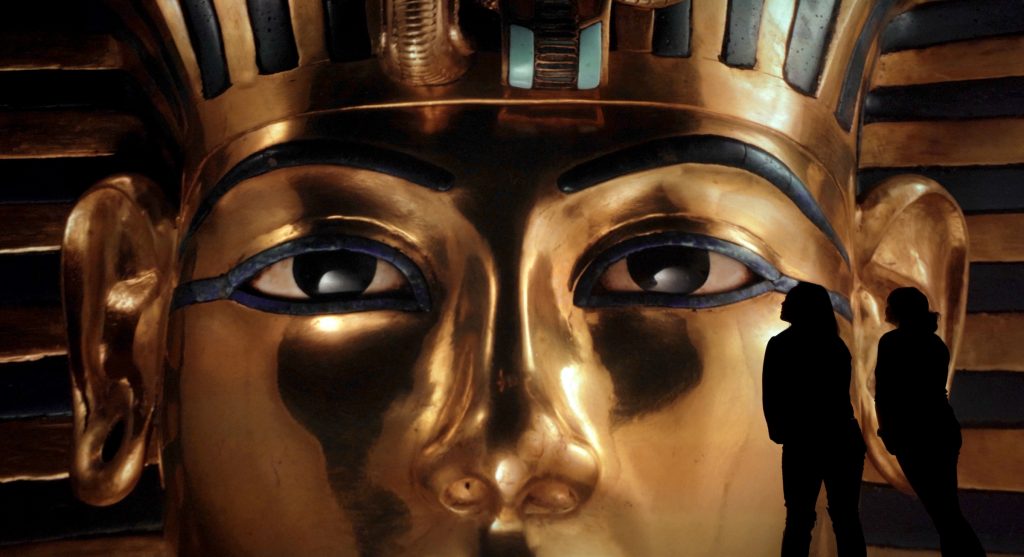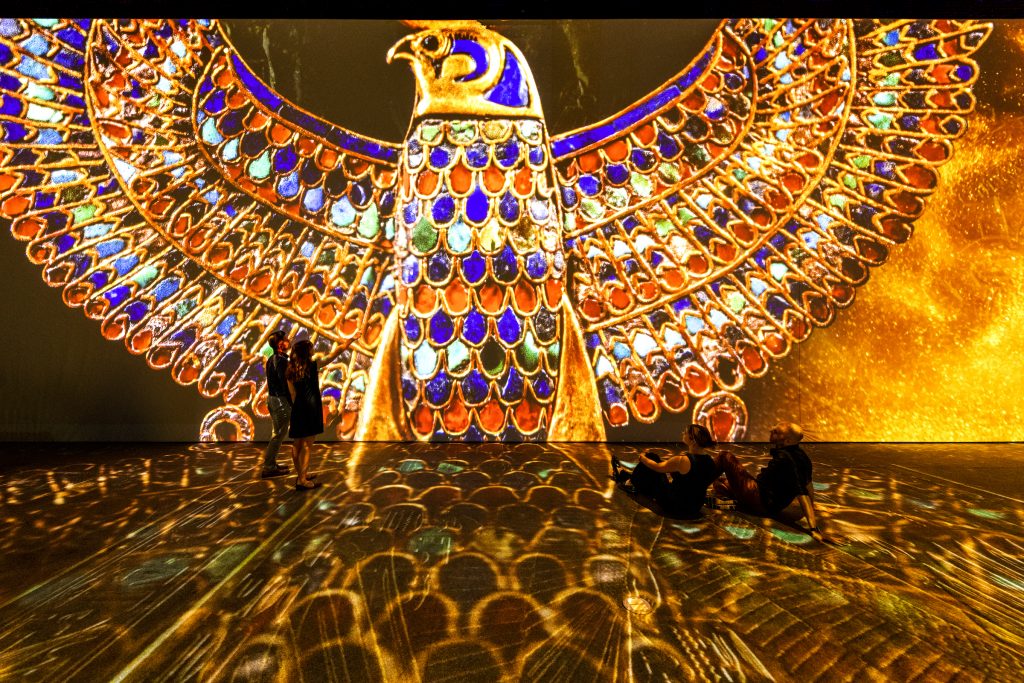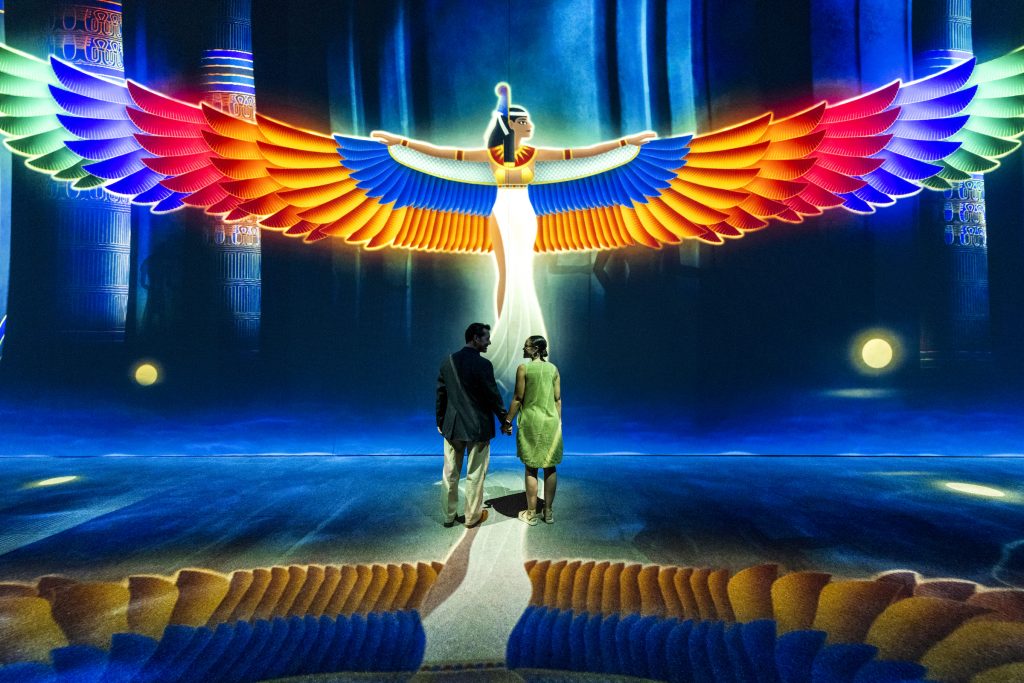
Vancouver Convention Centre East Building (999 West Hastings) until January 8, 2023
Tickets start at $23.99 (ages 5-15) and $31.99 (adults) at www.beyondkingtut.com
Posted November 4, 2022
Quoted from www.history.com (November 4, 2022: It was one hundred years ago on November 4, 1922, that British archaeologist Howard Carter and an Egyptian team discovered an ancient stairway hidden for more than 3,000 years beneath the sands of Egypt’s Valley of the Kings. Twenty-two days later, Carter descended those stairs, lit a candle, poked it through a hole in a blocked doorway and waited as his eyes grew accustomed to the dim light. Details of the room within emerged slowly from the mist, strange animals, statues, and gold, everywhere the glint of gold,” wrote Carter. “I was struck dumb with amazement.”

A century later, the discovery of King Tut’s tomb, which contained more than 5,000 priceless artifacts, remains the greatest archeological find of all time because, unlike all the others, his tomb was very slightly robbed out soon after it was sealed, then quickly resealed until Carter broke through the walls of the innermost chamber and was dazzled by what he saw.
Today, the ten kilogram gold funerary mask of young King Tutankhamun, is one of the most recognized images in the world.
Becoming pharaoh at the age of nine following the death of his father King Akhenaten and remaining in power only until his death at 19, King Tut was born with scoliosis, a club foot and a cleft palate. He is almost always portrayed seated with a cane by his side; in his tomb were found more than one hundred canes. He is said to have been tall but somewhat frail although ancient images show him driving his own chariot. At the age of twelve he married his teenaged half-sister; two female, mummified, stillborn babies were also discovered in his tomb. He produced no living heirs and power quickly shifted, temporarily, to two of his advisors.

Beyond King Tut, an immersive, history-telling experience produced by the Paquin Entertainment Group and Immersive Experiences in cooperation with the National Geographic Society, invites you into nine distinct galleries with wall-sized images, text, music and animations. Moving from room to room, you see huge photographs with descriptions of the most significant of the 5,000 artifacts in King Tut’s tomb – many of them meant to ease his journey into the afterlife: gold sandals, senet (a boardgame that he enjoyed), a knife, a boomerang, plus the alabaster jars containing his lungs, stomach, liver and intestines. Mummification is described in detail and the rituals surrounding the death of a pharaoh are explained along with depictions of the various gods that informed life and death in ancient Egypt. Room-sized photos of present-day sprawling, busy Cairo and the desert city of Giza help orient you in space.
The last and largest gallery, with a replica boat that King Tut would have sailed to the afterworld, describes his journey with floor-to-ceiling images on all four walls and the floor; no easy passing but fraught with a mythic snake that had to be vanquished, thunder and lightning storms through which he had to row, the twenty-four questions posed by twenty-four judges and, finally, the weighing of his heart to see if he deserved immortality.

It’s a lot to take in and will probably send you scurrying – as I did – to do some follow-up reading. A free downloadable education companion can be found at https://beyondkingtut.com/wp-content/uploads/2022/09/Beyond_King_Tut_Educational_Companion_AllMarketEdit-1.pdf and is well-worth reading if you plan to take children. Yours is a timed entry but you can stay as long as you like – and you will want to. You may double-back to check on details or simply to gaze on the face of young King Tut once more. Little did he know how important his life and, even more more important, his death would be to uncovering the mysteries of ancient Egypt three thousand years later.

